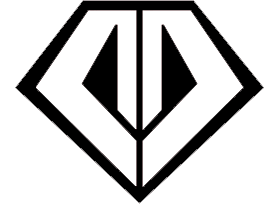
Headlines are important to effectively communicate your marketing messages. Your ad headline is 4/5 of your whole ad, meaning that if you had to spend a dollar, 80 cents of that is going to the headline. In other words, four out of five people will decide whether or not they’re going to read your article based on the headline alone. Since nobody can respond to an ad that they don’t read, your headline is almost the most important thing. It’s even more important by far than the content in the ad. Now it’s good to get every single thing right, but if you start off wrong, if you do get every single thing right it’s not going to matter anyway.
Headlines are good pitches to get people to say “tell me more.” The only goal of a headline is not to sell somebody on something, but to get them to read your opening paragraph, which will then get them to read your second paragraph, which will then get them to read your third and so on until they read your call to action. And then if everything else is right, they will buy. So you want to get your sales letters read? It starts with the headline. Do you want to get your blog posts read? Your articles read? Most of the time it’s because of your headline whether they get read or not, especially the cold traffic. E-mails are critical. You can have the greatest campaign in the world, but if nobody opens up your e-mail in their inbox, you’re screwed.
If you think “I need to come up with a headline,” you’re not thinking very logically and intelligently about getting the best headline. What you need to say is “I need to come up with a hook.” Once you come up with a hook, the headline will practically write itself. The strategy behind the headline is much more significant than anything else, and the hook is the most important part of the headline; because the hook is what catches the fish and reels them in. So don’t even think about writing a headline until you first have isolated and identified your hook.
Your offer
Before writing your sales letter, you should know what your offer is. What your customer is getting, the price they’re getting it for, the bonuses that are included, and the guarantee that goes with it. You also should know your best benefits. Before even writing your sales letter you should know the top benefits your product has, and how they relate to the ideal solution that your prospect is picturing in their mind.
Your Story
How you came up with this solution, how you found this, why you’re sharing this solution with them, something that’s going to engage them emotionally and pull them in. What’s your story going to be in your sales letter? How are you going to put all your other elements into a story form?
Proof
How are you going to validate your claims? It’s one thing to say “We do this bigger, faster, stronger, etc.” It’s another thing to say “And here’s why we do this bigger, faster, and stronger. Here is why we’re better than somebody else,” and show actual validated proof.
Ask yourself these questions:
What’s the strongest part of your offer?
What is the strongest benefit you have?
If you combine three or four benefits into one sentence, what would that sentence look like?
What’s the most incredible aspect of your story?
What’s my most dramatic form of proof?
What is scarce about your product that will most likely entice your prospect to make an impulse decision?
How can you combine all these together into one solid, good headline?
You don’t have to combine them all, but when you look at the best part of your offer, benefit, story, scarcity, and proof, and turn it into something that’s enticing that’s going to get people to say “Wow you’re talking to me! You’ve got my attention. I want to read on. I want to find out what’s going on here.”
